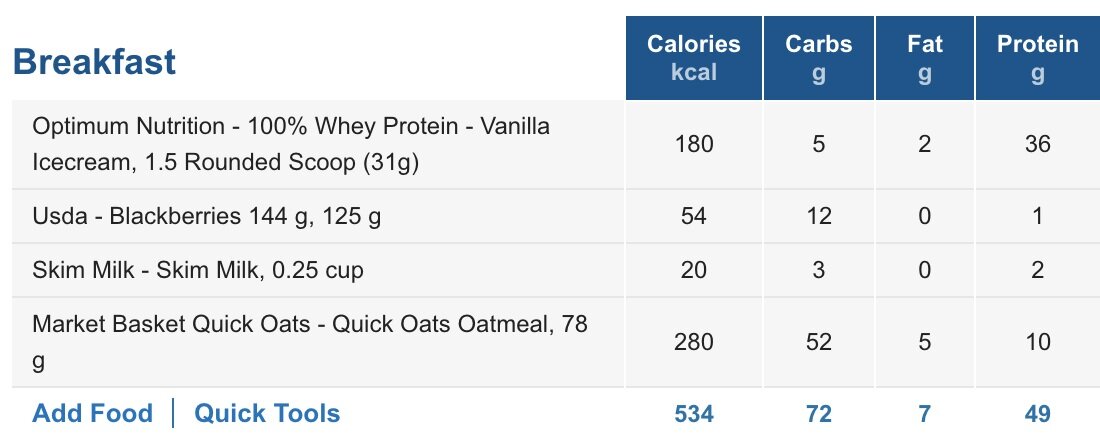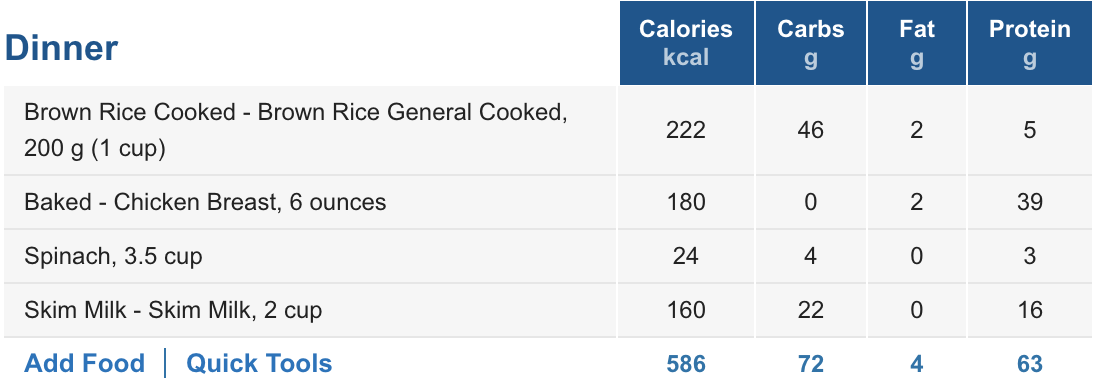It’s funny how my concept of “healthy” has evolved and grown over my lifetime. I can remember grouping foods into “healthy” and “not healthy” in my head for a long time. For example, I used to think of the following foods and food groups like this:
Fast Food = “Unhealthy”
Salad = “Healthy”
Pizza = “Unhealthy”
Fruit = “Healthy”
And, you can probably see where I’m going with my list.
This is how I thought about “healthy” and “unhealthy” for a long time. To be fair, learning to categorize foods to some extent is a great educational place to start, but as I personally learned more about nutrition, my definition of “healthy” evolved into something much more specific (for the better).
The reason that my view of “healthy” vs “unhealthy” foods evolved is because:
Whatever I had been practicing for my nutrition for a long time was not working. How did I know that? Because I wasn’t getting the results I wanted.
I wanted a more wholistic view of the word “healthy” from an educational perspective.
My goals became more specific, and thus my nutrition had to be more specific as well.
What I learned about my assumptions between “healthy” and “unhealthy” was striking - especially regarding some of the apparently “healthy” choices I had been making that actually turned out to be setting me back in a powerful way.
My goal with this write-up is this: I want to present a consideration of a handful of diet choices we commonly make that appear “healthy” on the surface but might actually be a hindrance to our diet goals when misapplied.
#1: Ordering or Buying Products that Contain “Superfoods” or are Ambiguously Thought of as “Nutritious”
This was a big hurdle for me personally.
When I was in high school, I remember starting to care more about my diet choices for the first time. I was an athlete and I wanted to make choices that wouldn’t “slow me down” on the field.
At least that’s how I thought about it.
So, I would put avocado on everything when given the option because the internet said avocados contain healthy fats, which they do, but that was my only thought about avocados at the time. Healthy foods will make me a better athlete, right?
I had also heard that nut butters were a good source of healthy fats, so I gave myself the green light on those as well.
Now, this increase in fat intake was great for me in high school because I looked like a scrawny alien twig, but if I were to implement that same viewpoint now as an adult while making a focused effort to lose body fat, it would most likely be setting me back due to the excessive caloric intake alone.
For that reason, it’s always a good idea to know the macronutrient content of your foods along with the micronutrient breakdown that may qualify a food as nutritious.
Because in my opinion, the last thing you want to be doing when trying to lose body fat is eating foods you think should be helping you when they are actually slowing down your progress or even pushing you in the wrong direction. Unfortunately, plenty of well-intentioned people unknowingly make that mistake all the time.
On a coaching note, part of what Andrew and I do with our clients is educate them on basic nutrition while providing structured macronutrient goals so that we can be as optimal as possible with their body recomposition goal. In other words, we try to guide you through a calorie-controlled approach to your goal without ignoring the overall importance of eating nutrient-dense foods.
#2: Blindly Ordering Salads at a Restaurant as Opposed to Another Entrée
Back when my novice definition of “healthy” sat on the nutrition throne of my brain, I began to order salads out at restaurants.
Because salads are healthy, right?
Actually, yes! Salads can be amazingly healthy for us, but that doesn’t mean you can’t get fat from eating too many nutrient-dense salads.
Think about it. When most of us order salads at restaurants, we cover them in things like:
Croutons - Mostly carbs and extra fat
Cheese - Contains protein, but generally an equal amount of fat or more
Fatty Dressings - Most salad dressings contain a LOT of fat.
Avocado - High fat content, even though they are nutritious
Fatty Meats - A lot of salads (especially Italian salads) can pile on heaps of salami, pepperoni, bacon, prosciutto, etc.
Nuts (especially candied/glazed) - While nutritious, these nuts contain a lot of fat. And, if they are candied or glazed, they will also include a lot of sugar which equals extra carbs.
Realistically, if you have a caloric plan in mind or are keeping a mindful eye on your macronutrient intake, you could add a few of these to your salad and still reach your goal.
But, these toppings become a problem if you decide to add three or four of these to one salad because it dramatically changes the caloric total of the entire meal. It’s the cumulative calorie effect that results in weight gain.
Some things to add to your salad instead of some of the ingredients above to add another element could be:
Grilled Chicken - high in protein and will help fill you up with a much needed macronutrient, especially if trying to hold onto hard-earned lean muscle tissue
Vegetables - For me personally, texture is a big deal, so adding veggies with a little crunch to them is great! You could even try chipped cucumbers, celery, broccoli, carrots, and/or peppers next time.
Egg Whites - Whole eggs can be great as well, but I prefer hard-boiling an egg and then chopping up the whites for some easy extra protein
Beans - Rinse out a can of your favorite beans and add some extra protein to your diet. This is a great option for those that eat plant-based diets.
Fresh Herbs and Spices - Talk about taking flavor to another level without adding any unwanted fats! Try using some basil, mint, dill, or cilantro with your salad. Just make sure you know the herb you choose will pair well with your other flavors.
Lemon Juice - I like using just a little bit of oil and then squeezing fresh lemon juice onto my salad as a dressing. As it turns out, a little bit of citrus can go a long way.
Again, depending on your goal, any of the options above could be a good substitution or mindful addition.
#3: The Misapplication of Intermittent Fasting
I have been effectively using intermittent fasting in my current fat loss phase, so I’m certainly not making intermittent fasting the enemy here.
I still consume three to four large meals during my “eating window” (which is 10 hours for me instead of the commonly recommended eight-hour window), and I also consume several high-protein snacks.
But, where does it go wrong for some people?
In my opinion, here are two common ways intermittent fasting is frequently abused:
You’re narrowing your eating window to less than eight hours and only giving yourself time for one or two large meals.
When we do this, we can sometimes negotiate with ourselves and eat foods that are less nutritious or have unfavorable macronutrient compositions since we are sacrificing an entire meal. In other words, we lose sight of nutrition in favor of a game of calories and calories alone. Just because you could eat a plate of nachos and cheese for 1500 calories doesn’t mean that is going to lead to the body recomposition outcomes you want.
I’ve also found that intermittent fasting can lead to more snacking, and generally the snacks we tend to pick aren’t as nutrient-dense or macro-friendly as something we might cook for a proper meal.
Eating one large meal can also make people feel sluggish and lethargic.
Your protein consumption might not be as optimal as it could be.
If your goal is to lose fat while maintaining lean muscle tissue and you choose to enter the intermittent fasting world, you may not be able to eat all of the protein you could benefit from according to most evidence-based guidelines.
And, as I mentioned above, typical snack foods tend to be high in carbohydrates and fats and generally low in protein. So, if you tend to be a snacker while practicing intermittent fasting, your snacks may be a limiting factor in your progress.
If you need more clarity about how you could go about calculating your own protein intake, check out this blog.
Again, intermittent fasting doesn’t have to be the enemy, but it is often touted as a very healthy diet strategy even though it can easily be misapplied.
Feeling Motivated?
Like I said at the beginning of the article, it’s probably a good idea to be very careful about making sure that the “healthy” choices we are making are actually choices that help us move toward our goals rather than push us further back.
I also mentioned that part of a coaching relationship with an IVRY Fitness coach is a personalized macronutrient goal to help you reach a specific body composition goal. So, if you have always wanted to make a change but have continuously felt stuck because nothing you have ever tried in the past has worked, consider reaching out to us.
We have open coaching slots and are looking for highly motivated clients that want to make a significant change in their body composition.
Click here to learn more, The journey always has to begin somewhere, so why not here and now?










